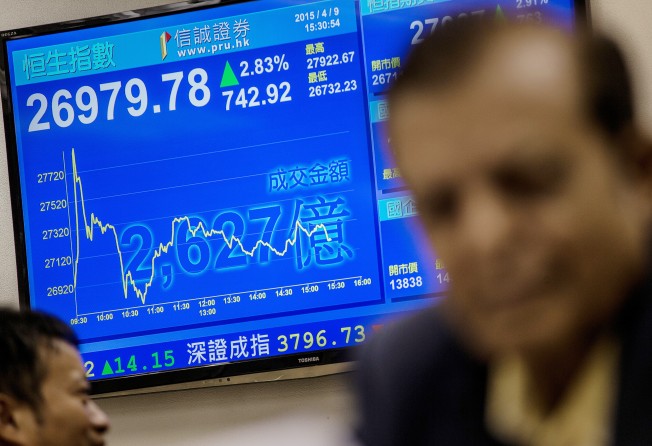Beijing policy volatility could signal new equity upside

Policy signals from Beijing appear to be conflicting with moves seemingly aimed at calming stock market speculation being followed within 48 hours by a massive injection of liquidity into the financial system.
But analysts at Goldman Sachs in Hong Kong say equity investors should look beyond the noise and focus on a big picture outlook of reform, liquidity and cheap valuations – especially if near-term volatility from weekend policy moves prompts a fall in headline share prices.
“We see any meaningful correction (5 per cent) for H-shares as strategically-attractive entry levels to engage, especially for global investors who have been underweight Chinese equities, have been caught off-guard by the recent rally, and have found buying opportunities difficult to come by so far,” Goldman analysts wrote in a note to clients on Monday.
That strategy, however, is not without risks as the team also points out.
Senior regulators, including the China Securities Regulation Commission chairman, Xiao Gang have recently warned about the short-term risk in the combination of bullish investor sentiment, rising leverage, and rapidly rising retail participation in the equity market.
Objective sentiment and turnover indicators have all moved to extreme levels. Annualized turnover velocity in the A-share market has leapt 16.5 times, while newly opened share trading accounts last week hit 1.6 million. Both echo the previous peaks in 2007.
“When turnover velocity (a measurement of speculative length) reaches high absolute levels, it typically suggests a higher likelihood that regulators will step in to tighten rules, manage risk, and potentially smooth out necessary asset price volatility,” the Goldman team wrote.
Meanwhile leverage has risen significantly and rapidly. The margin financing balance is reaching record highs almost on a daily basis and now stands at around 1.7 trillion yuan – roughly 15.7 per cent of market turnover, 8.1 per cent of free-float market capitalisation, and 1.6 per cent of 2014 GDP.
All look high in a global context, even without the inclusion of a raft of other leverage products available to investors that are not accounted for in the basic stock market data, the Goldman team wrote.
Outweighing those risks though is the scale of the easing that Sunday’s 100 basis point cut to banks’ required reserve ratios brings, the fact that it was far in excess of market expectations and that as a consequence, it has not been fully priced into markets. The bank calculates that ever 50 basis points in the cost of equity translates into an 8 per cent upside for H-shares.
“Our re-rating thesis for Chinese equities is predicated on three key pillars: reforms, liquidity, and inexpensive equity valuations. While markets have rallied, we believe these underlying drivers stay largely intact,” the Goldman note said.
Goldman analysts reckon there are 19 high quality H-share laggards to choose from that offer the best way in for investors looking to build China exposure, offering an average upside potential of 34 per cent.
The top five picks based on potential upside versus the current trading price and Goldman’s target price are E-House, SouFun, Weibo Corp, Sun Art Retail Group and Tarena International.